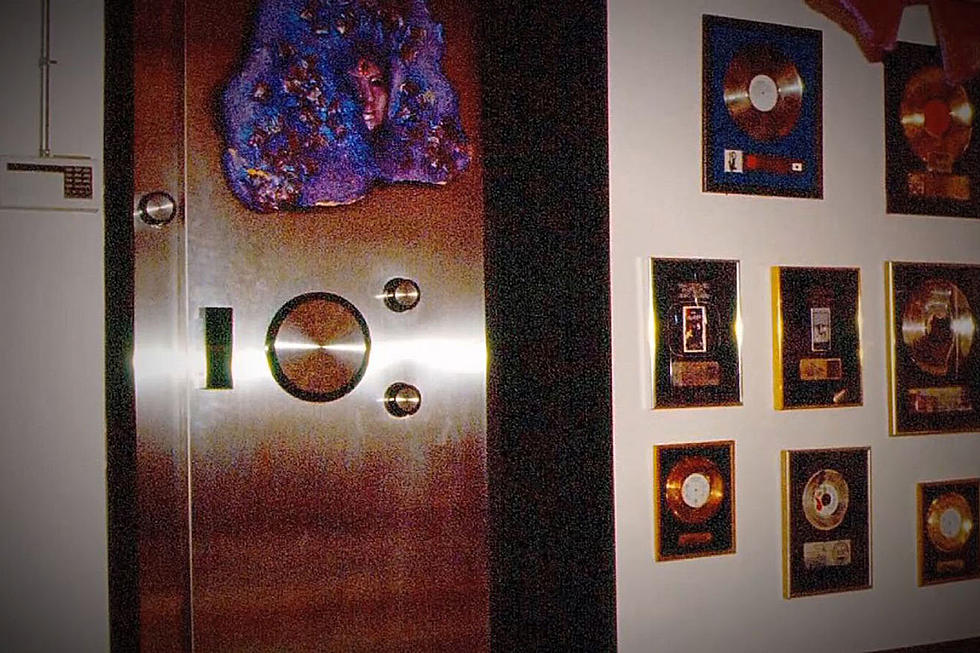
Years Before His Emancipation, Prince Longs to Be ‘Free’: 365 Prince Songs in a Year
To celebrate the incredibly prolific, influential and diverse body of work left behind by Prince, we will be exploring a different song of his each day for an entire year with the series 365 Prince Songs in a Year.
While legend has it Wendy Melvoin’s debut with Prince and the Revolution came on the Aug. 3, 1983 show at First Avenue, the concert that yielded the soundtrack source tracks for “Purple Rain," “Baby I’m a Star” and “I Would Die 4 U” and the live debuts of “Let’s Go Crazy” and “Computer Blue," her first appearance actually came a year-and-a-half earlier, halfway across the country, at Sunset Sound in Los Angeles. This was when the guitarist was invited to sing backup on "Free," a sweet ballad from Prince’s fifth album, 1999.
While it’s primarily remembered as one of Prince’s most patriotic songs, there’s a lot more going on within the lyrics. “Don’t sleep until the sunrise / Listen to the falling rain / Don’t worry 'bout tomorrow / Don’t worry about your pain.” It rarely rains in Los Angeles, so perhaps Prince knew a storm cloud of Purple Rain, the project that would transform his career, was on the horizon. Even through Prince sings of pain and loneliness on “Free," a beat later exclaiming, “Never let that lonely monster take control of you,” there was a lot of sexual combustion in the studio on this track. Vanity (Denise Matthews) and Jill Jones, both love interests of Prince at the time, sing harmony with Melvoin and her lover, longtime Revolution keyboardist, Lisa Coleman.
One other primary woman in Prince’s life, engineer Peggy McCreary, is also a crucial part of this mix. According to two Alex Hahn books, Possessed (2003) and The Rise of Prince (2017), McCreary was a former waitress and gofer at the Roxy club on the Sunset Strip before taking night classes in audio engineering. She was a staff engineer at Sunset Sound when Prince arrived to record many projects, including 1999. Every book chronicling Prince’s studio exploits at the time document the grueling long hours McCreary spent setting up the studio to Prince’s precise specifications. While Susan Rogers would later engineer some of Prince’s most iconic works (including Purple Rain and Sign O’ the Times), McCreary personally witnessed Prince’s transformation into a superstar.
The 1999 sessions saw Prince taking full advantage of the Linn LM-1 drum machine that he first used on “Private Joy” from Controversy. He also tapped into Sunset Sound’s bank of sound effects, employing the street footsteps heard on “Lady Cab Driver," the baby that caps "Delirious" and the heartbeat on “Free." “A lot of experimental sound and backwards stuff was tried,” said Revolution drummer Bobby Z in Per Nilsen’s book DanceMusicSexRomance.
Early on in the sessions, Prince spoke little to McCreary. “Look, I’m not going to be able to do this unless you talk to me,” she later recalled to Hahn. As Prince opened up, the creativity flowed. The sessions were so long, “freedom” for McCreary likely meant little catnaps while Prince recorded around the clock.
“Free” is Prince’s attempt to cheer people up by putting things in perspective by noting that others have it much, much worse. This was a few years before Live Aid and USA for Africa, the project that inspired both “4 the Tears in Your Eyes” and “Hello”, shifted the world’s attention to the famine in Africa. In 1982, a potential nuclear war with Russia was still our nation’s primary threat. The lyric, “Be glad that U are free / There’s many a man who’s not," was the precursor for “Communism, is just a word / But let the government turn over / It’ll be the only word that’s heard” in 1985’s “America”.
"Free" would remain a part of Prince's setlist for much of his career. According to the PrinceVault, it was last performed a few months before his death during the Piano and a Microphone tour stop at the Sydney Opera House in Australia on Feb. 20, 2016.
Prince Year by Year: 1977-2016 Photographs
More From










